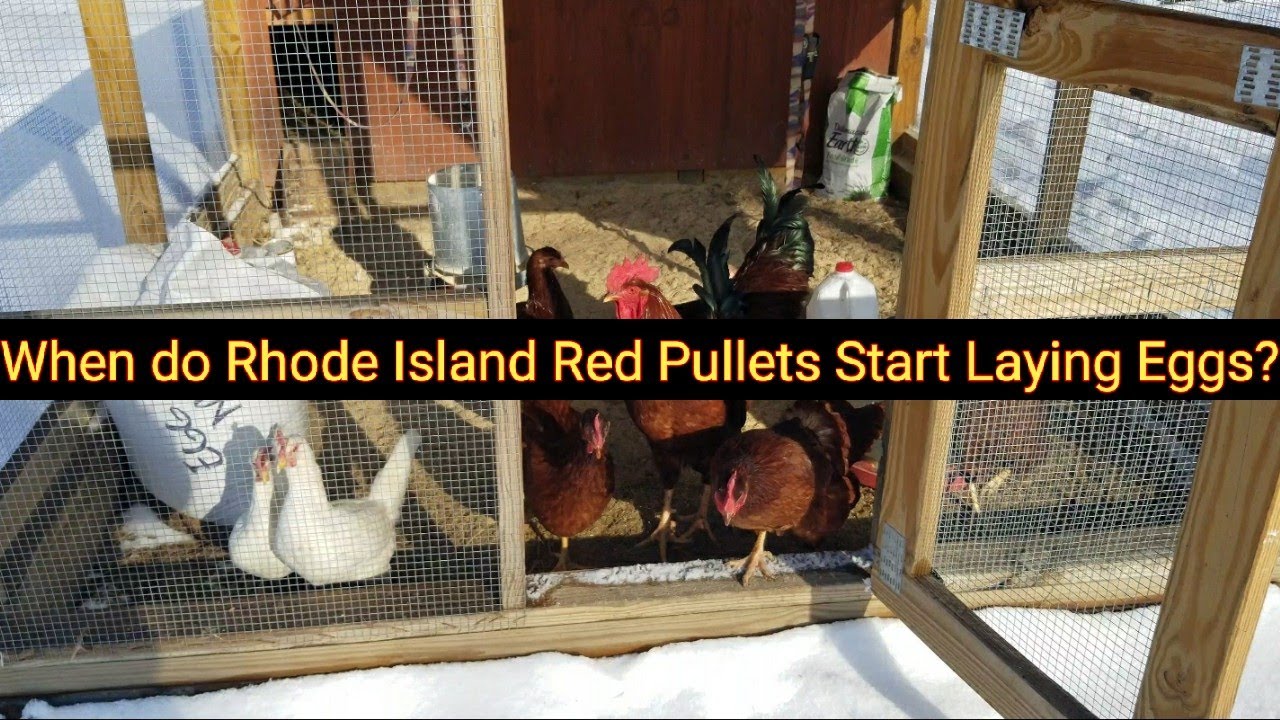Introduction: Rhode Island Reds and Egg Laying
Rhode Island Reds are one of the most popular chicken breeds around the world, known for their hardiness, versatility, and superb egg-laying abilities. These birds, native to the United States, have been cherished by chicken enthusiasts for over a century. However, many poultry keepers often wonder at what age Rhode Island Reds begin laying eggs. In this article, we will explore the maturation process of Rhode Island Reds, the factors that influence the age at which they start laying, and the signs that indicate they are ready to produce their first eggs.
Understanding the Maturation Process of Rhode Island Reds
To comprehend when Rhode Island Reds will start laying eggs, it is crucial to understand their maturation process. Like all chickens, Rhode Island Reds go through a series of physical and hormonal changes as they grow from chicks to mature hens. It is during this maturation process that their reproductive systems develop, ultimately leading to egg production.
Factors Influencing the Age Rhode Island Reds Start Laying
Several factors influence the age at which Rhode Island Reds begin laying eggs. One of the most significant factors is genetics. Different bloodlines within the Rhode Island Red breed may have variations in the timing of egg production. Other factors that come into play include nutrition, lighting conditions, health, and environmental factors.
Typical Age Range for Rhode Island Reds to Lay Eggs
On average, Rhode Island Reds start laying eggs between the ages of 4 and 6 months. However, keep in mind that this is merely an average, and individual birds may deviate from this timeline. Some Rhode Island Reds may start laying as early as 4 months, while others may take up to 6 months or even longer to begin producing eggs.
Signs Indicating Rhode Island Reds are Ready to Lay Eggs
There are several signs that indicate Rhode Island Reds are ready to lay eggs. The most obvious sign is the development of a vibrant red comb and wattles. As the hen’s hormone levels increase, these parts of their body become larger and more pronounced. Another sign is the behavior of the hen. They may become more curious, exploratory, and vocal. Lastly, the vent of the hen, located near the base of the tail, will become more relaxed and moist as the hen approaches egg-laying age.
Importance of Proper Nutrition for Early Egg Production
Proper nutrition plays a crucial role in the early egg production of Rhode Island Reds. Calcium and protein are essential nutrients for the development of strong eggshells and adequate egg production. A balanced diet that includes a combination of commercial chicken feed, fresh vegetables, and clean water is vital to support the health and productivity of these birds.
Physical and Behavioral Changes in Rhode Island Reds
As Rhode Island Reds approach the age of egg-laying, they undergo various physical and behavioral changes. Physically, their pelvic bones start to widen, allowing them to pass eggs through their reproductive tract. Behaviorally, they may exhibit nesting behaviors, such as scratching and exploring potential nest sites. Some hens may also become more territorial and start exhibiting broody behavior.
Rhode Island Reds and Their First Egg-Laying Season
When Rhode Island Reds lay their first eggs, it marks the beginning of their first egg-laying season. This initial season tends to be sporadic and inconsistent. It is not uncommon for hens to lay smaller-sized eggs or have irregular laying patterns during this time. As they mature, the frequency and size of their eggs will become more consistent.
Challenges Faced by First-Time Rhode Island Red Layers
First-time layers, including Rhode Island Reds, face several challenges during their initial egg-laying season. It takes time for their reproductive systems to fully develop and regulate, resulting in variations in egg size, shell quality, and laying frequency. Additionally, stressors such as environmental changes or disturbances can impact their egg production. However, with proper care and management, these challenges can be minimized.
Role of Environmental Factors in Egg-Laying Timing
Environmental factors, such as lighting conditions and temperature, can influence the timing of egg-laying in Rhode Island Reds. The increase in daylight hours during spring and summer triggers the production of hormones that stimulate egg production. Moreover, temperature fluctuations, particularly extreme heat or cold, can cause hens to delay or cease laying temporarily until conditions become more favorable.
Health Considerations in Early Egg Production for Reds
During early egg production, it is crucial to pay close attention to the health of Rhode Island Reds. Nutritional deficiencies, diseases, and parasites can negatively affect their egg production. Regular monitoring, vaccination programs, and proper biosecurity measures are necessary to ensure the optimal health and well-being of these birds, especially during this critical phase.
Conclusion: Nurturing Rhode Island Reds into Productive Layers
Rhode Island Reds are prized for their prolific egg-laying capabilities, and understanding when they begin laying eggs is key to nurturing them into productive layers. By considering factors such as genetics, nutrition, behavior, and environmental conditions, chicken keepers can provide the necessary support for Rhode Island Reds to achieve their full egg-laying potential. With proper care, these remarkable birds will reward their keepers with a consistent supply of delicious, farm-fresh eggs for years to come.





